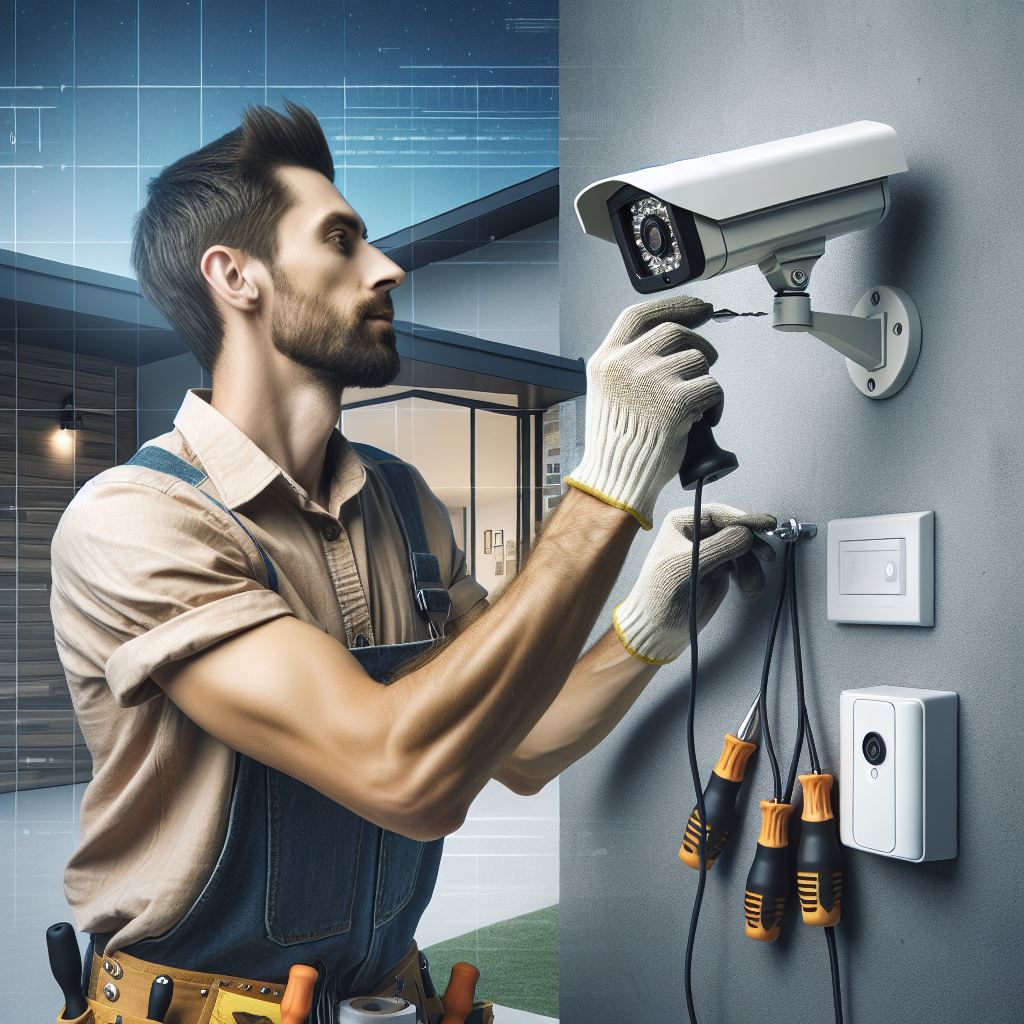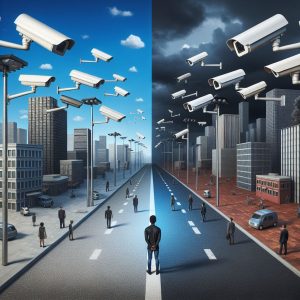Introduction
Setting up a CCTV system on your own can be a rewarding project that enhances the security of your property. While it may seem daunting at first, with the right tools, materials, and guidance, you can successfully install a CCTV system without professional help. This comprehensive guide will walk you through the entire process, from planning and selecting equipment to installation and troubleshooting.
1. Understanding CCTV Systems
What is a CCTV System? CCTV (Closed-Circuit Television) systems are used for surveillance and security. They consist of cameras, recording devices (DVRs or NVRs), monitors, and sometimes additional components like microphones and motion detectors. The cameras capture video footage, which is then transmitted to the recording device and displayed on monitors.
Types of CCTV Systems
- Analog Systems: Use coaxial cables to transmit video signals to a DVR.
- IP Systems: Use network cables (Ethernet) to transmit video signals to an NVR. These systems often offer higher resolution and more advanced features.
2. Planning Your CCTV System
Assess Your Security Needs
- Identify the areas you want to monitor (e.g., entry points, driveways, backyards).
- Determine the number of cameras needed based on the size and layout of your property.
- Consider the lighting conditions in each area to choose cameras with appropriate features (e.g., night vision).
Choosing the Right Equipment
- Cameras: Select cameras based on resolution, field of view, and whether they are for indoor or outdoor use. Common types include bullet, dome, and PTZ (pan-tilt-zoom) cameras.
- Recording Device: Choose between a DVR (for analog systems) or an NVR (for IP systems). Ensure it has enough channels to support all your cameras.
- Cables and Connectors: For analog systems, you’ll need coaxial cables and BNC connectors. For IP systems, Ethernet cables (Cat5e or Cat6) are required.
- Power Supply: Ensure you have adequate power supplies for all cameras. PoE (Power over Ethernet) cameras can simplify installation by using a single cable for power and data.
- Monitor: A display screen for viewing live and recorded footage.
3. Gathering Tools and Materials
Essential Tools
- Screwdrivers (flathead and Phillips)
- Power drill and drill bits
- Cable cutters and strippers
- Fish tape or cable puller
- Ladder
- Measuring tape
- Level
Safety Gear
- Safety goggles
- Gloves
- Dust mask (if drilling through walls)
4. Installation Process
Step-by-Step Guide
- Planning Camera Placement
- Mount cameras at a height of 8-10 feet to avoid tampering and provide a wide field of view.
- Ensure cameras are protected from the elements if installed outdoors.
- Avoid pointing cameras directly at light sources to prevent glare.
- Running Cables
- Plan the cable routes from each camera to the recording device.
- Use fish tape to pull cables through walls or ceilings.
- Secure cables with cable clips or conduit to prevent damage.
- Mounting Cameras
- Use the mounting template provided with the camera to mark drill holes.
- Drill holes and insert wall anchors if needed.
- Attach the camera bracket and secure the camera in place.
- Adjust the camera angle for optimal coverage.
- Connecting Cameras to the Recording Device
- For analog systems, connect the camera’s BNC connector to the DVR.
- For IP systems, connect the camera’s Ethernet cable to the NVR or a PoE switch.
- Connect the power supply to each camera.
- Setting Up the Recording Device
- Connect the DVR or NVR to a monitor using HDMI or VGA cables.
- Power on the recording device and follow the on-screen setup instructions.
- Configure recording settings, such as resolution, frame rate, and motion detection.
- Testing the System
- Verify that each camera is transmitting video to the recording device.
- Check the live feed on the monitor to ensure proper camera angles and coverage.
- Test the recording and playback functions.
5. Troubleshooting Common Issues
No Video Signal
- Check all cable connections and ensure they are secure.
- Verify that the camera and recording device are powered on.
- Test the camera with a different cable or port on the recording device.
Poor Image Quality
- Clean the camera lens to remove dirt or smudges.
- Adjust the camera focus and angle.
- Ensure the camera resolution settings are configured correctly.
Intermittent Video Feed
- Check for loose or damaged cables.
- Ensure the power supply is stable and sufficient for all cameras.
- Update the firmware of the recording device and cameras.
6. Best Practices for DIY Installation
Safety First
- Always use a sturdy ladder and have someone assist you when working at heights.
- Wear safety gear to protect yourself from dust and debris.
Cable Management
- Label cables to identify which camera they belong to.
- Use cable ties or Velcro straps to keep cables organized and prevent tangling.
Regular Maintenance
- Periodically check and clean camera lenses.
- Ensure all connections are secure and free from corrosion.
- Update firmware and software to maintain system performance and security.
Conclusion
Setting up a CCTV system on your own can be a cost-effective way to enhance the security of your property. By carefully planning, selecting the right equipment, and following best practices, you can successfully install and maintain a reliable surveillance system. Remember, if you encounter any difficulties or feel unsure about any part of the process, don’t hesitate to seek professional assistance.
Secure Your Home and Business with Garrison Alarms!
Experience unmatched safety with Garrison Alarms – your trusted partner in cutting-edge home and business security solutions. With over 35 years of experience, we offer expert installation, state-of-the-art technology, and personalized security strategies tailored to your unique needs.
Our Services Include:
- Home & Business Alarms: Maximize security with our advanced wired and wireless alarm systems.
- CCTV Systems: Protect your property with high-resolution, 4K HD, and color night vision cameras.
- Access Control: Secure your premises with keypad entry, biometric solutions, and more.
- Alarm Monitoring: 24/7 monitoring to ensure your safety and peace of mind.
Why Choose Garrison Alarms?
- Expert & Professional Service: Our licensed technicians provide top-notch installation and support.
- Customer Satisfaction: We prioritize your security and satisfaction with a focus on quality and reliability.
- Affordable Pricing: Get the best security solutions at competitive prices.
Get a FREE Quote Today! Visit Garrison Alarms or call us at 09 520 4875 to learn more and secure your property today!
Garrison Alarms – Your Safety, Our Priority





